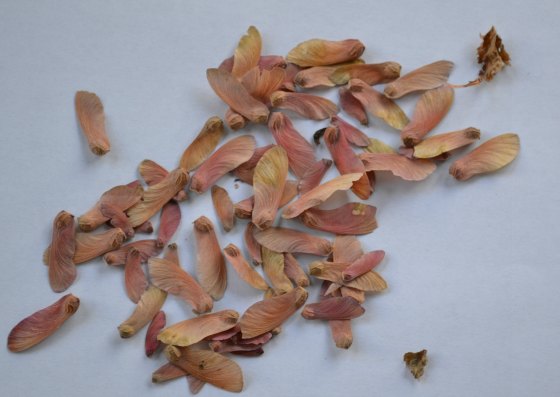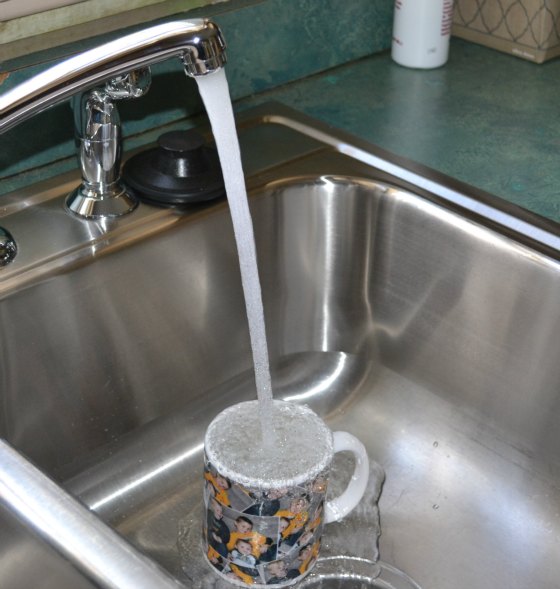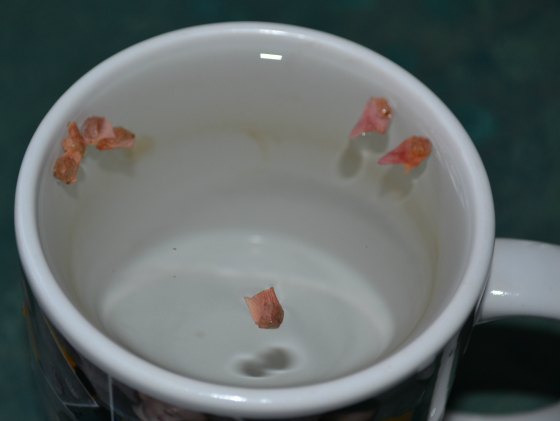| Online: | |
| Visits: | |
| Stories: |

| Story Views | |
| Now: | |
| Last Hour: | |
| Last 24 Hours: | |
| Total: | |
How to Grow Japanese Red Maple Trees from Seed
Japanese Red Maple Trees are actually quite easy to grow from seed. In this article I will give you step by step instructions for doing so.
A Step by Step Guide to Growing Japanese Maples from Seed.
But first we need to chat about what kind of Japanese maple can and cannot be grown from seed.
Japanese maples grown from seed are not exact clone of the parent plant.
It’s important to understand that not all, in fact many Japanese maples are not grown from seed. Most of the rare, or interesting varieties of Japanese maples are actually grafted on to a Japanese maple seedling, which of course is grown from seed.
The Japanese maple in the above photos is Waterfall, which is in the dissectum family of Japanese maples. Dissectum meaning split leaf or cut leaf. The leaves are much smaller than a regular, or generic Japanese maple and they have very interesting jagged edges. A Japanese maple like this cannot be grown from seed. It has to be budded or grafted to a seedling.
We need to have the “Sex” talk.
Growing a plant from seed is considered sexual reproduction. When a plant is grown from a cutting, a graft or a bud that is considered asexual reproduction because it that is not the way that nature intended for plants to be reproduced. Asexual reproduction produces an exact clone of the parent plant.
Without “asexual reproduction” most of the beautiful and amazing plants that we have come to love would never be known to us because there would only one of them. Asexual reproduction is how nurserymen or nursery women create hundreds and hundreds of identical plants so home owners across the land can enjoy them.
The million dollar question.
Mike, if a beautiful tree like the Waterfall Japanese maple can not be grown from seed, and that’s not how nature does things, where did the very first one come from?
Chance seedlings.
Great question. Every once in a while, and I do mean every once in a while, Mother Nature gives us a gift. A chance seedling that is absolutely beautiful and looks and acts nothing like the parent plant. These chance seedlings are probably one in a million, maybe one in a hundred thousand, but for sure their arrival is completely unpredictable.
This is not a Japanese maple, but . . .

This beautiful tree, the Lavender Twist Weeping Redbud tree is the direct result of a chance seedling being discovered by a very astute gardener.
And . . . when chance seedlings do appear, a very astute gardener needs to be nearby to actually take notice and realize that something really special has happened. Honestly, when an awesome chance seedling is discovered, it is nothing short of a miracle and all of us who love and appreciate plants are better because of it. A perfect example of that is the Lavender Twist Weeping Redbud tree. Not a Japanese maple, but a truly amazing plant that was a “chance seedling”, discovered by a very astute gardener and developed and brought to market by a very talented nurseryman. If you care to read that story you can do so here.
Growing Japanese maples from seed is exciting.
Truth be told, if you grow Japanese maples from seed, you are probably going to end up with some rather generic seedlings. Some with red leaves, some with green leaves, what most would consider “generic Japanese maples”. But there is always that chance that one of your seedlings could the most awesome Japanese maple ever!
There are more than 1,000 Japanese maple varieties in the world today, so there are plenty of chances that your seedling could be the next big variety to come to market. So let’s get started!
Step 1. Collect some Japanese maple seeds.
There a few things about collecting Japanese maple seeds that we think we know, but there is always that are of complete unpredictability that makes this fun. If you collect Japanese maple seeds from a Japanese maple that has green leaves, chances are your seedlings will have green leaves. Maybe not all of them, but of them are likely to have green leaves.
If you collect Japanese maple seeds from a tree with really deep red color, chances are, many of the seedlings that you grow will have good red color and are likely to hold that color pretty well through out the growing season. There are a number of Japanese maples that are notorious for deep red color. They are named varieties. Bloodgood is one of the most popular, another is Oshi Beni and another is Emporer I.
All awesome plants. Seeds from those trees are likely to produce seedlings with nice red color. But you can’t call them Bloodgood, Oshi Beni or Emporer I. They are nothing more than red seedlings with the botanical name of Acer palmatum atropurpureum.
Acer is the botanical name for a maple tree, palmatum means Japanese maple and atropurpureum means red leaves. A Japanese maple seedling with green leave would be Acer palmatum.
Japanese maple seeds are produced in the spring and the summer and they need to hang on the tree into the fall so they have a chance to mature. If you harvest seeds before they are ready, they are not going to grow because the embryo will not be fully developed.
The best time to collect Japanese maples seeds is October here in northern, Ohio zone 5 and I would say that most zones where Japanese maples grow would be the same. As the seeds ripen they begin to turn brown and fall from the tree. You should start collecting them before they fall from the tree, but collecting them off the ground is not a problem, the seeds will still be very viable.
People often ask, how do I know whether or not a tree is a Japanese maple or not. And I’m not sure how to answer that, at least in print, but I assure you, once to start looking around you’ll be able to pick out a Japanese maple from a hundred feet away. Basically, this is what a Japanese maple leaf looks like. Or course there all different kinds of Japanese maples, but this is the most common.
Step 2. Check the seeds for viability.
After you collect the seeds you can spread them out on a table and randomly pick a few seeds from the batch. Place those seeds one at a time on a cutting board and cut through the seed with a sharp knife. As you do this notice what the consistency of the seed is like. The seed should firm, or hard. Not soft and mushy.
Inspect the inside of the seed. The inside of the seed should green or cream in color. The tissue should look firm and healthy with good color. If the seeds are hollow inside or the embryo is brown or brown and mushy, that seed is no good. It’s a good idea to know that your seeds are viable so you don’t waste your time trying to grow them.
If you suspect that you have bad seed, see if you can collect more from a different tree. There are likely all kinds of Japanese maple trees in your town that you may have never noticed. Banks, doctors office, city hall, parks, cemetery’s etc. And in peoples yards. Always ask permission, most people are happy to let you pick a few seeds.
Buying Japanese maple seeds.
You can buy Japanese maple seeds, but it’s always best to buy from a known and trusted source. I hate to say it, but some who sell seeds are only interested in getting your money and are not concerned about whether they sell you good seed or not. I often see ads for seed that make claims that quite simply, are just not true! And that’s the Beauty of Our Members Area. We have members who sell Japanese maple seeds in the Buy/Sell Area and they are very good about offering quality seed for sale at wholesale prices.
They also sell Japanese maple seedlings and rare and unusual varieties of Japanese maples as well. It’s really quite an amazing place. I have purchased thousands and thousands of dollars worth of rare Japanese maple from my own customers in the Buy/Sell Area of the Backyard Growers Business Center.
Of course everything is seasonal. Japanese maple seeds are usually available in the fall, usually mid October until they are sold out. Japanese maple seedlings and rare Japanese maples are often advertised in the late winter, but just recently I watch a member sell a ton of rare Japanese maple varieties in September. So you never know for sure, but there are always interesting plants for sale in the Buy/Sell Area and always at wholesale prices.
Step 3. Soaking Japanese maple seeds in hot water.
First let’s talk about sowing Japanese maple seeds outside, in the fall. Japanese maple seeds have a very hard outer coating and the seeds cannot, will not germinate, until that outer coating is softened up.
In nature this is a very slow process and can take up to two years before the outer coating is softened up enough for the seeds to germinate. And of course that means that germination could occur at any time during the growing season which is really not good. It’s best to have those seedlings germinate in the spring so that by the time summer and fall roll around they are strong enough to withstand the harsh summer heat and sun, and then the freezing weather in the fall and winter.
In other words, we can control when the seeds germinate by soaking them and softening the outer coating of the seed to get the germination process started.
This step is easy. Simply run hot water from the tap and fill a cup. Not quite boiling water, but hot water. Fill a cup with water, drop in your seeds and as the water cools down simply let them soak.
Remove, break off the wing before you soak the seeds.
The only part of the seed that you need is the part that is opposite the wing. Simply snap off the wing and keep the little round ball part. The actual seed is inside of that little round ball.
When you first place the seeds in the water they will float. As they soak the seeds will get heavier and drop to the bottom of the cup. Seeds that never sink are probably not viable and can be disposed of.
Keep in mind that propagating any kind of a plant is really a numbers game. The more you do, the better your chances of success. I took this photo just so I could do this article. If I were serious about growing these seeds for myself I would collect and sow hundreds if not thousands of seeds.
Let them soak for 24 hours. If you want to repeat this process and soak them for another 24 hours I’m sure that would be fine and it will to help soften the outer coating of the seeds. Just pour off the water and add more hot water and soak for an additional 24 hours.
Step 4. Sowing the Japanese maple seeds outside in the cold!
This too is a very simple process. You can sow them in Flat or a Tray or you can do as I often do and put them in a large, black plastic nursery container.
I like using the black nursery containers because the sun heats up the container and actually keeps the soil from getting too wet and soggy and of course plants love to be warm. When they are warm and happy they grow and they make roots. Warm soil is like magic.
Notice that I only put about 4 inches of Potting Soil in the container. That allows the sun to hit the inside of the plastic container as well as the outside of the container keeping the seeds nice and warm.
Just place this container outside, in an area out of the wind, but in a place where the sun can shine on the container. Don’t worry about the snow, the cold, the freezing temperatures. Japanese maple seeds actually need a cold treatment before they will germinate so typical winter weather is just part of the process. As long as the seeds are not in soggy soil they’ll be fine. The outer coating will soften and when spring arrives the seeds should germinate.
I say “should germinate” because there are a lot variables that can affect this process. Most importantly, if the seeds need to be in a type of soil for Potting Soil that Drains Well and doesn’t hold too much water. As long as the seeds don’t rot they will germinate eventually as long as they are viable seeds.
Step 5. Once the seeds start to germinate in the spring, move the container to a shady location to protect the young seedlings from the intense sun. Just keep them watered.
As they germinate you can pick them out of the container and plant them in flat, or tray that has cell packs or a jiffy pot and just let them grow and put on some size. You can fertilize them with liquid, foliar fertilizer spray.
Or you can simply leave them in the nursery container until the following fall. At that time simply remove them from the container and gently shake the soil loose and you will be able to pull the seedlings apart. Once separated just plant them in a bed or in your garden until they get larger. Or you can put them in pots and grow them that way.
Option #2 is Cold Stratification in a Refrigerator.
With this option timing is extremely important. Please pay close attention to the timing and mark your calender. A lot of people get this wrong and they end up doing the right thing at the wrong time of year and their results are terrible, usually a complete failure.
The steps for the refrigerator method are as follows.
Step 1. Collect the Japanese maple seeds in the fall just as describe above. If you want to do the cut test as describe above you can do that now before you store the seeds.
Step 2. Do not soak them at this time. Instead simply put them in paper bag and store the bag in a cool dry place.
Step 3. Count backwards 90 days from you last date of frost in the spring. Here in Ohio we are not usually out of danger of frost until May 15th so that’s the date that I would start counting backwards from. 90 days from May 15th would be February 15th. That’s the day that I would start stratifying my seeds.
Step 4. On your “start stratifying day” take the seeds out of the paper bag and soak them in hot water as described above for 24 to 48 hours.
Step 5. After soaking put them in a freezer bag along with some light, fluffy potting soil. A soil that can hold some moisture but not stay soggy. Shake up the bag thoroughly mixing the seeds with the soil. Once thoroughly mixed together poke a few small holes in the top of the bag so it can breath a little. Or simply zip the bag almost shut, leaving one corner open a little.
Step 6. Place the bag of seeds and soil in your refrigerator. Do not push the bag all the way to the back of the fridge, things back there tend to freeze if left alone for very long. You want the seeds to be cold, but not freezing. If they freeze it won’t harm them, but the stratification stops or slows down considerably if the seeds and the soil freeze.
Step 7. Mark your calendar. Count ahead 90 days on the calendar and make a note to yourself to get the seeds out of the fridge on that day. Check the bag carefully. If you see seeds that have started to sprout simply pick out the germinated seeds with a pair of tweezers and carefully plant the germinated seed in a flat of well drained potting soil, or seed starting soil. Put just a light layer of soil over the seed as you plant them. The first thing to grow out of the seed will be a root so put the seeds in the soil root down.
Step 7. After picking out all of the germinated seeds leave the bag of remain seeds on the counter at room temperature. Once the seeds and the soil warm up the rest of the seeds should start germinating quickly. It might be a matter of two or three weeks before all of the seeds germinate. Possibly longer. Just pick them out as they germinate and transplant them into the flat.
Be careful with fertilizers. Not enough is far better than too much. Miracle Grow mixed at 50% of the normal rate is really all you want to use.
Grow the seedlings out as described above.
Keep in mind, both green leafed and red leafed Japanese maple seedlings have value. You can always find somebody willing to buy a 12″ to 18″ Japanese maple seedling with red leaves. Those things sell like hot cakes! But even those with green leaves sell well, Especially in Our Members Area, because growers want them to use as a root stock for grafting other interesting varieties to. Typically the ideal size for grafting is a diameter of 3/16″ to 1/4″.
This is my tutorial on grafting, but first I have to be 100% honest with you. I’m terrible, completely negligent about replying to comments on our Japanese maple site. Why is that? I’m only one person and a busy one at that. I spend a great deal of timing answering questions and help people in Our Members Area, and I do my best to reply to comments here on http://www.mikesbackyardnursery.com/. But I just can’t find the time to check all of our sites and I apologize for that. Here’s the Grafting Tutorial; Take a Peek.
Why bother to graft at all? Because the most awesome Japanese Maples in the world have to be grafted. Here are just a few to give you an idea of why I say that; Awesome and Beautiful Japanese Maple Varieties.
Questions or comments? Post them below and I’ll answer your questions.
We have a number of resources that might interest you, Take a Peek here.
Source: http://mikesbackyardnursery.com/2015/10/how-to-grow-japanese-red-maple-trees-from-seed/









